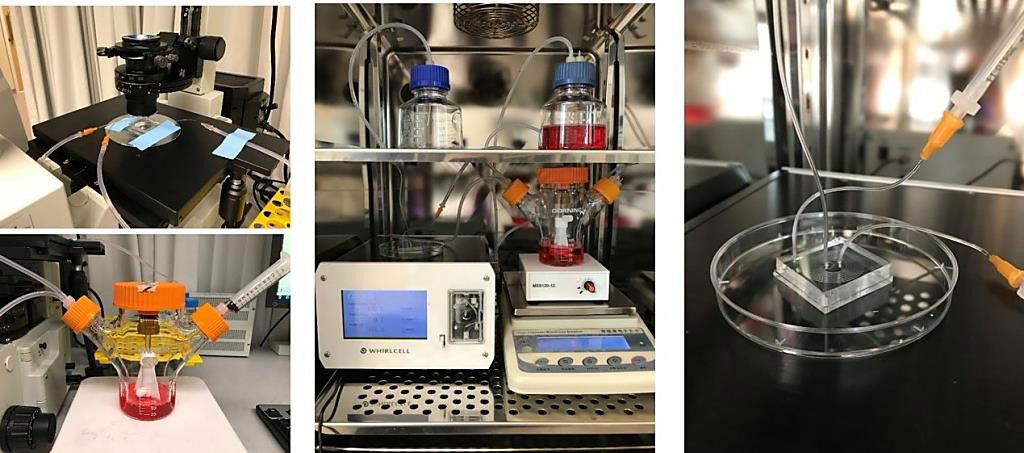Microfluidic Label-Free Bioprocessing of Reticulocytes from Erythroid Culture
By LabMedica International staff writers
Posted on 30 Sep 2020
Blood transfusions save millions of lives every year, but over half the world's countries do not have sufficient blood supply to meet their needs. The ability to manufacture red blood cells (RBCs) on demand, especially the universal donor blood (O+), would significantly benefit those in need of transfusion. Posted on 30 Sep 2020
Easier and faster manufacturing of RBCs would also have a significant impact on blood banks worldwide and reduce dependence on donor blood which has a higher risk of infection. Reticulocytes are nucleus-free, immature RBCs originating from self-renewing hematopoietic stem and progenitor cells (HSPCs) within the bone marrow.

Image: Laboratory set-up of microfluidic sorting and purification of cells during red blood cell culture and manufacturing (Photo courtesy of Singapore-MIT Alliance for Research and Technology).
An international team of scientists led by those at the Singapore-MIT Alliance for Research and Technology (Singapore) developed novel purification and sorting methods by modifying existing Dean Flow Fractionation (DFF) and Deterministic Lateral Displacement (DLD); developing a trapezoidal cross-section design and microfluidic chip for DFF sorting, and a unique sorting system achieved with an inverse L-shape pillar structure for DLD sorting.
These new sorting and purification techniques using the modified DFF and DLD methods leverage the RBC's size and deformability for purification instead of spherical size. As most human cells are deformable, this technique can have wide biological and clinical applications such as cancer cell and immune cell sorting and diagnostics. The team used many techniques including that on day 23 of erythroid culture, cells were stained in a batch of 50 million cells and maximum total of 200 million cells at once for sorting by BD ARIA II (BD Biosciences, San Jose, CA, USA).
On testing the purified RBCs, they were found to retain their cellular functionality, as demonstrated by high malaria parasite infectivity which requires highly pure and healthy cells for infection. This confirms SMART's new RBC sorting and purifying technologies are ideal for investigating malaria pathology.
Compared with conventional cell purification by fluorescence-activated cell sorting (FACS), SMART's enhanced DFF and DLD methods offer comparable purity while processing at least twice as many cells per second at less than a third of the cost. In scale-up manufacturing processes, DFF is more optimal for its high volumetric throughput, whereas in cases where cell purity is pivotal, DLD's high precision feature is most advantageous.
Kerwin Kwek Zeming, PhD, a Bioengineer and lead author of the study, said, “Traditional methods for producing human RBCs usually require 23 days for the cells to grow, expand exponentially and finally mature into RBCs. Our optimized protocol stores the cultured cells in liquid nitrogen on what would normally be Day 12 in the typical process, and upon demand thaws the cells and produces the RBCs within 11 days. Our novel sorting and purification methods result in significantly faster cell processing time and can be easily integrated into current cell manufacturing processes. The process also does not require a trained technician to perform sample handling procedures and is scalable for industrial production.” The study was originally published on September 14, 2020 in the journal Lab on a Chip.
Related Links:
Singapore-MIT Alliance for Research and Technology
BD Biosciences













